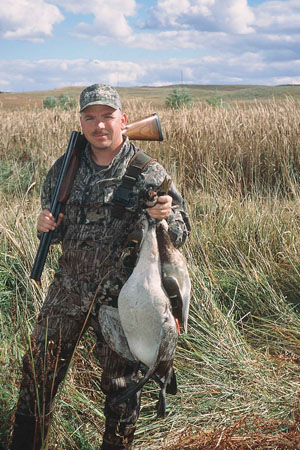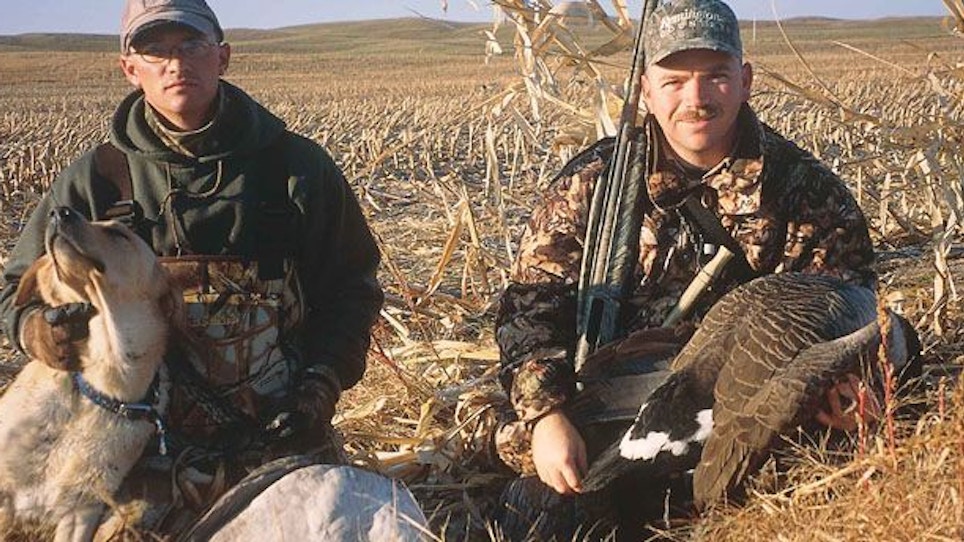 Calling and use of decoys:
Calling and use of decoys:
Although much of my personal success with resident geese has leaned heavily on ambushes, there is no question that the birds will respond to good calling and sensible use of decoys. As much as anything, I think that these appeals to the senses of hearing and sight give the geese a sense of comfort. They are most effective when you manage to set up in an area where geese have been feeding or that looks promising in that regard, but sometimes they will also work in locations where geese have had some previous bad experiences. You don’t need a huge spread of decoys, but a dozen or so in feeding positions just might make the difference between success and failure.
Pass-shooting:
Most waterfowlers think of pass-shooting more in terms of ducks than geese, but for the hunter who knows the proclivities of local populations of Canadas, this can be a grand approach. It is particularly well-suited to the lone hunter or a couple of buddies who just want to get out for an hour or two at dawn. So long as their roost area is undisturbed, resident geese have a pronounced bent toward flying to and from it at a given time each day. Could I shoot from my garden, there are two flocks of Canadas who come overhead within range at about the time I’m going to get my morning newspaper right through the winter. Find a situation like this where you can hunt, and chances are you will have some brisk if abbreviated action. Better still, find several of them and shoot the “flight lanes” just a couple of times a year. That way, the geese may not change patterns.
*Jump-shooting: Resident geese often focus on small ponds, farm fields surrounded by woods or sporting useful drainage ditches, or other locations where the hunter who is willing to stoop to conquer can get within range. When you find geese in such situations, go into belly-crawling mode. Ease up as close as you can get — and 15 yards is much better than 40 — then if at all possible plan your shooting before the geese discover your presence. You want to take a bird almost as soon as they take flight, and if you are close enough you should be able to get off two more telling shots while the birds are in range. A couple of successful sneak attacks in a morning can fill a limit. It may not be traditional sitting-in-a-blind-and-waiting-them-out hunting, but to my way of thinking there’s a great deal of satisfaction to be gained by utilizing woodcraft to goose-killing advantage.
Camouflage:
Here you can’t be too well hidden. A mask or face paint, along with head-to-toe attire that blends in to your surroundings, is a must. Resident Canadas, once they’ve been shot at, become every bit as adept at detecting hunters as the migratory ones that make their way along the flyways.
In the final analysis, many aspects of the resident geese equation resemble traditional waterfowling practices. What’s different is the locale, the behavior of the geese and some of the special approaches required to get into the game of dealing with them. Rest assured it is worthwhile, for in state after state across the country resident Canadas have added a new dimension to the waterfowling experience. Come fall, check out your local situation and dial in on this intriguing, different face of the waterfowler’s world.






